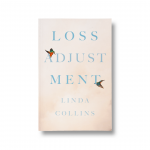Kerosene Triptych
2011 - Drawing & Print (Drawing & Print)
Natasha Wheat
Natasha Wheat’s Kerosene Triptych (2011) is composed of three images, one each from the digital files of the Library of Congress, the Smithsonian Institution, and the Field Museum tropical research archive. The original photographs were taken by anonymous photographers, not as art but as documents of the building of the Panama Canal. The laborers in the images are holding cans of kerosene and spraying it into the foliage. It was a common practice during the building of the canal for American companies and the military to import black workers from the Antilles Islands to spray kerosene to kill mosquitoes and prevent malaria. This practice resulted in massive health problems for the laborers and the disappearance of many species of local wildlife—not just insects but also plants and animals. With this work, Wheat uncovers and generates a space where the movement of objects (the movement of objects being the function of the Panama Canal) takes priority over life, art, and society itself. The coming together of the three images into a single work stands as abstract documentation of sterilization—both cultural and biological.
Natasha Wheat’s diverse body of work explores social experience as a sensual phenomenon that is riddled with hierarchical complexity. Her objects, installations, and interventions engender and disrupt a full range of interpersonal relations. Wheat was the founder of Project Grow, an art studio and urban farming program based in Portland, Oregon, that employed developmentally disabled adults and investigated the intersection of food, ideology, society, and exchange. She earned her BFA from the School of the Art Institute of Chicago and an MFA with an emphasis in social practice from California College of the Arts.
Colors:
Related works featuring themes of: » Abstract, » Contemporary Conceptualism, » Dark, » Focus on Materials, » American
» see more
Other related works, blended automatically
» see more

© » KADIST
Natasha Wheat
2011Wheat’s work is built on a strong conceptual framework that weaves together commentary on social and political issues and the radical potential for change...

© » KADIST
Zai Kuning
2014Converting is a piece about the Orang Laut, often called Sea Nomads, that inhabited the Riau archipelago...
Related works sharing similar palette
» see more

© » KADIST
Felipe Arturo
2012Primero estaba el mar ( First Was the Sea , 2012) is a system of equivalences between syllables and silhouettes of waveforms cast in cement...

© » KADIST
Gan Chin Lee
2019In Studies of Chinese New Villages II Gan Chin Lee’s realism appears in the format of a fieldwork notebook; capturing present-day surroundings while unpacking their historical memory...

© » ARTS EQUATOR
Tender reading: A review of Loss Adjustment by Linda Collins | ArtsEquator Thinking and Talking about Arts and Culture in Southeast Asia Articles January 28, 2021 By Grace Foo (650 words, 3-minute read) Not many people can endure the traumatic experience of losing a child to suicide, let alone be of sound mind to write about it in a painfully self-aware manner...

© » KADIST
Ho Tzu Nyen
2011The Cloud of Unknowing (2011) is titled after a 14th-century medieval treatise on faith, in which “the cloud of unknowing” that stands between the aspirant and God can only be evoked by the senses, rather than the rational mind...
Other works by: » Natasha Wheat
» see more

© » KADIST
Natasha Wheat
2011Wheat’s work is built on a strong conceptual framework that weaves together commentary on social and political issues and the radical potential for change...
Related works found in the same semantic group
» see more

© » KADIST
José Castrellón
2016Palo Enceba’o is a project by José Castrellón composed of three photographs, two drawings on metal, and a video work that creates a visual and cultural analogy between the events of January 9th, 1964 in Panama City and the game of palo encebado carried out in certain parts of Panama to celebrate the (US-backed) independence from Colombia...

© » KADIST
José Castrellón
2016Palo Enceba’o is a project by José Castrellón composed of three photographs, two drawings on metal, and a video work that creates a visual and cultural analogy between the events of January 9th, 1964 in Panama City and the game of palo encebado carried out in certain parts of Panama to celebrate the (US-backed) independence from Colombia...

© » KADIST
Donna Conlon and Jonathan Harker
2012In Tapitapultas (2012), Donna Conlon and Jonathan Harker comment on mass consumerism and pollution by way of a game they invented...





